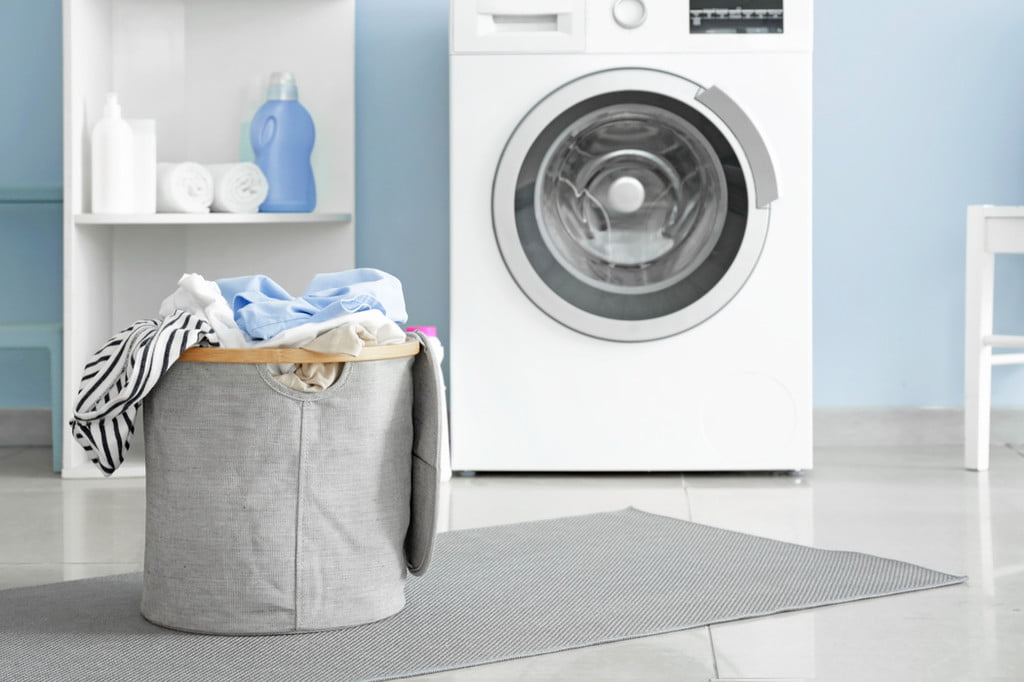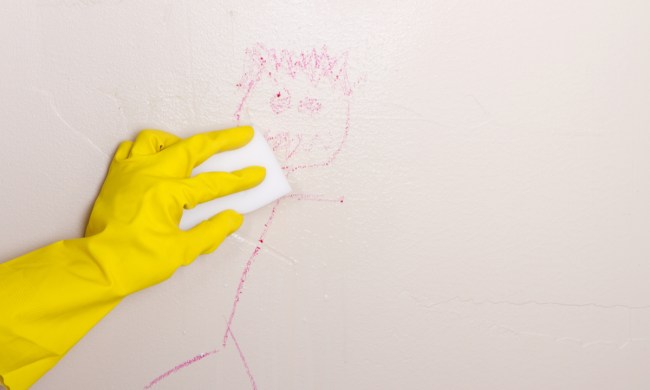Is laundry detergent safe for your body and the environment? The answer isn’t as simple as a “yes” or “no.” Searching for the perfect laundry detergent can be quite a challenge. You want your detergent to do its job and get your laundry fresh and clean, but you also want to keep your family safe from harmful chemicals and do your part to protect the environment. Buying the safest laundry detergent sounds like a great idea, but what exactly makes laundry detergent “safe”?

Is it free of chemicals that harm your body?
Your first concern is always the safety of you and your family. Unfortunately, many laundry detergents still contain chemicals that can be dangerous. The most common harmful chemicals used in detergents have to do with added fragrances and brightening chemicals. Detergent companies know we want to look and smell our best, so they boast promises like “fresh scents” and the “brightest colors” to capture our attention.
The problem is, chemicals like phthalates and benzene are used to accomplish these features, and these are chemicals that are known to cause skin irritation, negatively impact hormonal balances in the body, and some are even known to cause cancer. When you’re choosing your laundry detergent, be sure to steer clear of brands whose number one promise is to make your clothes fresh and bright, especially if the detergent labels boast these ingredients.
Is it free of chemicals that harm the environment?
Your detergent is used with water in your washing machine, which is then drained out of your home and eventually into lakes and oceans. Marine life is then exposed to the harmful chemicals that exist in them. Phthalates and benzene — those chemicals that can harm your body — can also harm animals and negatively impact reproductive abilities in fish and other aquatic life. They also tend to be non-biodegradable, so they stick around in the environment for a long time and cause years of harmful effects.

Does it actually get your clothes clean?
Due to all of the awareness in recent years concerning harmful chemicals in laundry detergents, many households have hopped on the DIY laundry detergent bandwagon. While a DIY detergent can be a good option for supplemental washing, it simply isn’t a permanent or long-term solution to getting your laundry clean. Popular homemade detergent recipes lack some essential elements to cleaning and preserving your clothes’ life. After some time using a homemade detergent, you’ll find that your clothes will start to look dingy and feel less clean than with a store-bought detergent.
What are the essential elements in effective laundry detergents?
Effective laundry detergents contain chemical elements that remove dirt and stains from your clothes and work to flush the dirt away so that it doesn’t stick back onto your laundry during the wash cycle. Four primary essential elements in detergent ensure your clothes are actually clean.
- Bleach and enzymes work to target dirt and stains and lift them off of the cloth material.
- Surfactants and builders attack the released dirt particles and ensure they have washed away from your clothes and are pulled away by the water.
When any of these elements are absent from a detergent, you’ll find that certain stains won’t be removed or that dirt and grime are spread out and transferred to other areas of the clothes to make them look a bit dingier.
Finding the safest laundry detergent
Reading about the harmful effects of many laundry detergents that we’ve talked about here is enough to make you fearful. However, since awareness has begun to spread about harmful additives in detergents, companies have begun to strive for safer formulas. There are many safe detergent brands on the market today, but how do you find them?
Avoid fragrant and brightening detergents
A simple and sensible first step in finding a safe laundry detergent is to avoid added fragrances and chemical brighteners. Check the labels and research anything you’re not familiar with. If any chemicals are present for brightening and fresh scents, take a pass on that brand. As a pro-tip, if you feel you’ll really miss that fresh laundry scent, add a few drops of essential oils to your laundry load for a safe splash of fragrance.
Look for the EPA “Safer Choice” label
The Environmental Protection Agency has made some immense strides in measuring the safety of many laundry detergent brands. They have compiled lists of their top picks for the safest available brands, many of which proudly wear a seal of approval in the EPA’s “Safer Choice” label. They keep a database of their findings accessible to consumers.
Laundry detergents to consider
Seventh Generation Concentrated Laundry Detergent
Seventh Generation is a brand that you can easily find in chain supermarkets like Target. It’s certified by the USDA as a detergent made with at least 96% totally bio-based products, and it’s EPA certified as a Safer Choice for humans and the environment. The formula in this detergent has plant-based triple enzymes like Amylase and Protease that combat the toughest of stains and get your clothes squeaky clean. It’s also hypoallergenic, so it’s gentle on sensitive skin that reacts poorly to irritants. Those prone to conditions like contact dermatitis will find relief in the fact that no artificial additives or irritating fragrances are used in this detergent.
Dropps Stain & Odor Laundry Detergent Pods
With these handy detergent pods, you’ll have the benefit of both convenience and safe ingredients. This detergent fights foul odors and tough stains without harsh chemicals, dyes, parabens, phosphates, or phthalates. If you would like a subtle hint of fragrance, Dropps has options that offer fresh lemon scents, pine scents, lavender, or fresh clove, added using natural essential oils instead of artificial fragrances. However, they also have a fragrance-free option for those with skin sensitivity to any added scents. Best of all, this detergent is cruelty-free, and the packaging it comes in is completely recyclable and compostable to help you reduce your carbon footprint.
Dr. Bronner’s – Pure-Castile Liquid Soap
This liquid soap is so safe and so mild, it can be your one-stop-shop for anything you need to be washed. It can be your hand wash, your laundry soap, or your dish soap. You can even use it on your hair and body, as long as it’s diluted properly. With plant-based, organic, and fair trade ingredients and no artificial additives for brightening or fragrance purposes, this detergent is completely vegan, biodegradable, and safe for the environment. You can be confident that your conservation efforts will be contributed to with this product. To top it all off, this detergent is certified cruelty-free and is never tested on animals.
Your family’s health and happiness are always on your mind, right? Finding the safest and most beneficial products for both the body and the environment will go a long way to ensure your family’s long-term safety and quality of life. While finding the safest and most effective laundry detergent can take some research and testing on your part, you know have the knowledge needed to empower you to make wise and beneficial changes in your household’s cleaning habits.



